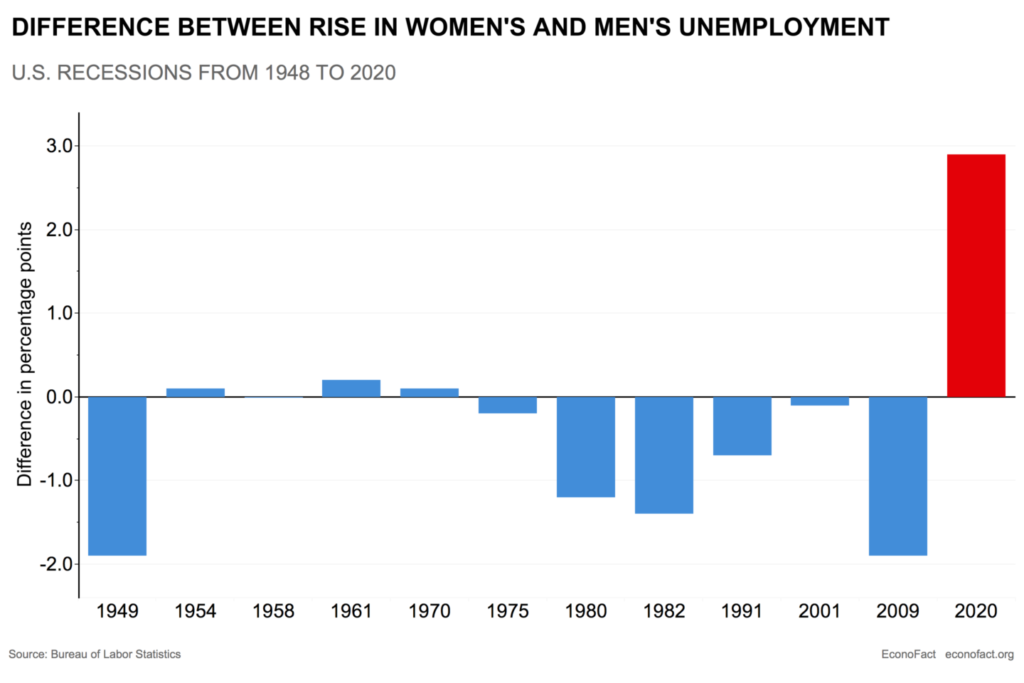This piece was originally published on Econofact on August 27, 2019.
The Issue:
Before Covid-19, the most recent economic recessions in the United States have been “mancessions,” meaning that employment losses were larger for men than women. In contrast, the Covid-19 recession has led to a sharp decline in women’s employment. Because workers who lose employment during a recession often experience earnings losses that long outlast the recession itself, the large impact of the recession on women matters for the evolution of the gender wage gap and women’s future prospects in the labor market. The fact that this recession is impacting men and women differently from past recessions could also have broader consequences for families and the trajectory of the economic recovery.

Women’s unemployment rate rose by 12.8 percentage points between February and April — a 2.9 percentage points larger increase than men’s increase of 9.9 percentage points.
The Facts:
During the Covid-19 recession in the United States, women’s unemployment rate rose by 12.8 percentage points between February and April 2020, 2.9 percentage points larger than men’s increase of 9.9 percentage points. In contrast, the five previous recessions were all “mancessions” with a larger rise in unemployment for men (see chart). Gender differences in terms of employment rather than unemployment are even larger. According to survey evidence, from February to August 2020 women’s average hours worked fell by 19 percent, versus a drop of only 12 percent for men. A substantially larger impact on women’s than men’s employment during a recession is historically unprecedented in the United States.
Part of this gender difference is explained by the nature of the shock and the disproportionate impact it had on jobs and occupations that tend to employ more women. Many women work in sectors such as restaurants and tourism, which were severely affected by the crisis. In terms of occupations, employment losses were largest in occupations requiring personal contact (e.g., retail and personal services), and women account for 74 percent of employment in high-contact occupations. We also document that fewer women work in critical sectors that were not affected by shutdowns, and fewer women work in occupations with a high ability to work from home, which facilitates continuing work during the crisis.